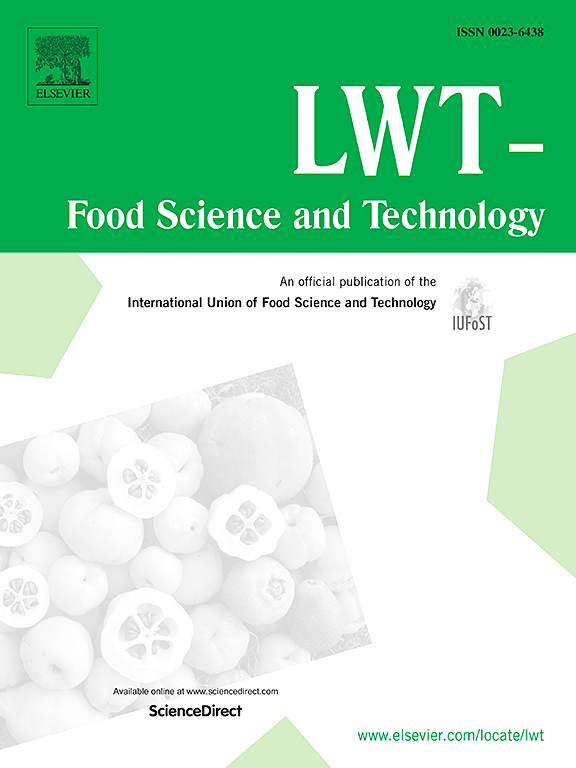有机酸过度产生对白酒发酵过程中微生物群落演替和风味代谢的影响
IF 6
1区 农林科学
Q1 FOOD SCIENCE & TECHNOLOGY
引用次数: 0
摘要
有机酸的过度产生会对白酒的质量和产量产生负面影响。本研究调查了酸度变化对微生物群落结构和新陈代谢的影响。发酵谷物的有机酸含量介于 42.35 至 56.90 克/千克之间,高酸度组的柠檬酸和琥珀酸平均含量分别是对照组的约 4.60 倍和 2.70 倍。在高湿度环境中,挥发性成分的浓度降低了近两倍,发酵谷物中淀粉的利用率也降低了近两倍。曼特尔检验和线性回归分析表明,柠檬酸和琥珀酸对发酵谷物的微生物群落结构有显著影响(P < 0.05),尤其是细菌群落,其多样性随着酸度的增加而降低。在高酸度胁迫下,微生物生态网络的复杂性降低,稳健性提高。斯皮尔曼相关分析表明,高酸度环境改变了微生物与风味物质之间的关系,表明微生物的新陈代谢受到了影响。此外,在白酒原酒中,高湿度组的酸、醛和酮的含量远高于对照组,但醇和吡嗪的含量明显低于对照组。这些发现对改善白酒生产过程中的质量管理和解决异常发酵问题具有重要价值。本文章由计算机程序翻译,如有差异,请以英文原文为准。
Overproduction of organic acids affects the microbial community succession and flavor metabolism during Baijiu fermentation
Overproduction of organic acids will negatively affect the quality and output of Baijiu. This study investigated how variations in acid levels affect the microbial community structure and metabolism. The organic acid content of fermented grains ranged from 42.35 to 56.90 g/kg, and the high-acidity group's average levels of citric acid and succinic acid were around 4.60 and 2.70 times higher, respectively, than those of the control group. In high-acidity settings, volatile component concentrations were reduced by nearly two times, as was starch utilization in fermented grains. Mantel test and linear regression analysis revealed that citric acid and succinic acid significantly (P < 0.05) influenced the microbial community structure of fermented grains, particularly bacterial community, with decreased diversity as acidity increased. The complexity of microbial ecological networks decreased and robustness increased under high acidity stress. Spearman correlation analysis demonstrated that high-acidity environments altered the relationship between microorganisms and flavor substances, indicating that microbial metabolism was affected. Furthermore, in raw Baijiu, the high-acidity group's acids, aldehydes, and ketones were much greater than those in the control, but alcohols and pyrazines were significantly lower. These findings are valuable for improving quality management and solving abnormal fermentation during the Baijiu production process.
求助全文
通过发布文献求助,成功后即可免费获取论文全文。
去求助
来源期刊

LWT - Food Science and Technology
工程技术-食品科技
CiteScore
11.80
自引率
6.70%
发文量
1724
审稿时长
65 days
期刊介绍:
LWT - Food Science and Technology is an international journal that publishes innovative papers in the fields of food chemistry, biochemistry, microbiology, technology and nutrition. The work described should be innovative either in the approach or in the methods used. The significance of the results either for the science community or for the food industry must also be specified. Contributions written in English are welcomed in the form of review articles, short reviews, research papers, and research notes. Papers featuring animal trials and cell cultures are outside the scope of the journal and will not be considered for publication.
 求助内容:
求助内容: 应助结果提醒方式:
应助结果提醒方式:


